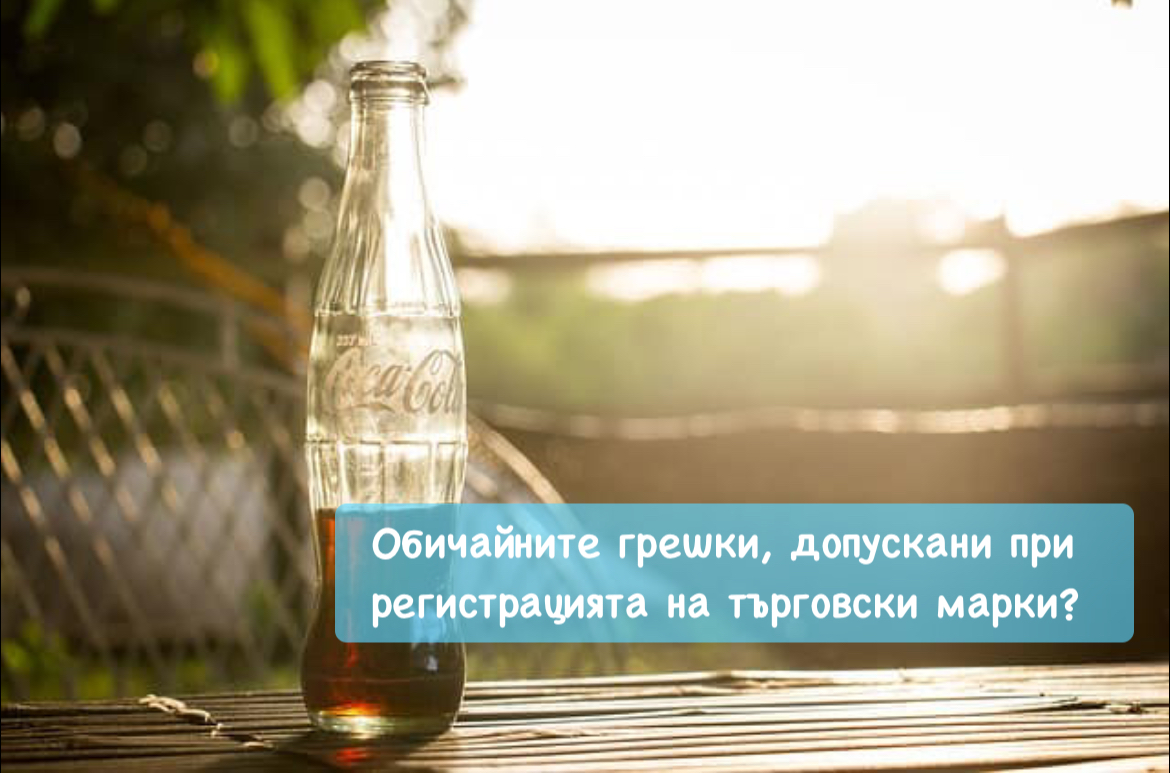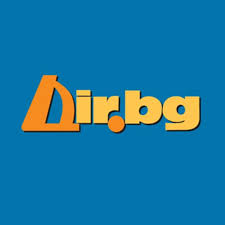
Common mistakes made in registration process of trademarks in Bulgaria.
I. Introduction.
In my practice as an intellectual property attorney in Bulgaria, for the last 20 years I have tried to convince many of my clients (individuals and owners of legal entities) that applying for a trademark requires knowledge in detail of a matter that is strictly professional and related to experience, knowledge - and even aesthetics, factors belonging to the sphere of business, law, marketing and art (if you wish). This article is not scientific in nature, but it aims to give you a vision of what not to do and what is useful to do when registering your trademark.
II. Here are the main key points :
1. Do not claim your trademark by yourself. It is true that both the Bulgarian Patent Office and the European Union Intellectual Property Office (EUIPO), Alicante, Spain, offers two very functional sites through which (supposedly at first glance) you can "do the work yourself". This is an illusion. Using a site without problems does not mean that you have chosen the right kind of trademark tо apply (marks can be word, figurative three-dimensional, sound, etc.), does not mean that you have correctly chosen the goods and services to claim and does not mean that doing so will not give rise to various types of legal problems (eg refusal on absolute grounds and opposition due to a similar or identical earlier trademark) which will result in the loss of the fee paid as well as the loss of the trademark itself. Why this is true I will explain in detail in my presentation.
1.1. Most applicants who decide to file a trademark on their own, "because it's easy", decide that they will file a word trademark. To the question "why did you do this", the answer in 99% of cases is "because I didn't feel like making a logo"! The bad news is that since 2010 So far, word trademarks are the weakest legally, since they do not have the so-called "visual distinctiveness", i.e. precisely because they do not have a logo, the user does not perceive them visually.
1.2. Visual distinctiveness is especially important when the do-it-yourselfer has applied for a descriptive trademark. What is this? You can't trademark a bread maker and make it sound like "The most delicious bread" or "Your bread." Why? Because every bread is delicious and every bread belongs to someone. The Trademarks and Geographical Indications Act expressly prohibits such descriptive trademarks and the Bulgarian Patent Office or EUIPO (if the trademark is European) refuses you the trademark on the so-called "absolute grounds for refusal" because the trademark is descriptive under Art. 11, para. 4 of ZMGO. If the mark is descriptive - for example "The Shop near you", but its logo has led to so-called "acquired distinctiveness" and the applicant can prove it, the motive for descriptiveness in the examination of absolute grounds can be overcome. This can of course only be done by a professional in the field of intellectual property, i.e. obviously "you cannot handle this difficult legal problem alone".
2. The trademark must always have a logo!
What has been said so far leads us to the conclusion that the trademark must always have a logo, i.e. it must be a so-called "figurative trademark". Figurative marks are those that represent an image, i.e. they are a combination of the word element - for example "Coca Cola" and the way in which that word element looks figuratively. As I have already explained, visual distinctiveness is very important. In the past (before 2010) black and white tardemarks covered all the colors of the rainbow as protection, but today you can only claim specific colors that are the subject of the logo - they do not cover all other colors and combinations. No. Only cover the specific colors requested. For example, if the trademark "Coca Cola" (see fig. 1) is claimed in red and white, these are the protected colors. You then can't use it in orange and green because you end up with the problem of "the applicant is not using his mark as he registered it" and that's grounds for cancellation of the mark because it leads to consumer confusion "which is the brand" - figuratively.
fig.1
There are also so-called "three-dimensional trademarks" - they are also images, but three-dimensional ones, as an example I can give the bottle of "Coca Cola". As an interesting detail, I can also mention that three-dimensional trademarks and industrial designs are actually one and the same thing, as depending on whether the novelty of a design is impaired or not, the registration of a three-dimensional trademark or design is resorted to. These are details that I have explained in an explicit article on the subject and I will not dwell on them here, but you can find it on the pages of our site.
3. Should the brand be abstract or should it mean something?
Most trademarks in the 21st century are abstract - Mozilla, Amazon, Google, Yahoo, Coca Cola, YamamaY, etc., they mean nothing and consist of 5 to 6 letters (characters). Why? As you already understood, this avoids the problem of descriptiveness, creating the necessary interest - figuratively and meaningfully - in the brand. I will give an example of one of the most famous brands of women's underwear so that I can be understood correctly.
fig.2 
I really like to give an example with the trademark "YamamaY" (see fig. 2) for the "abstractness" criterion. If you look at the image you will see that a careful analysis of the arrangement of the syllables leads to the conclusion that inside-out and outside-in are mirror images. The brand has a center and it is the letter "a". Also, the trademark has the word "mom" in it, because every cool chick in underwear, after a lot of "wow" or "ay, ay"... at some point becomes "mom" - clever, right? Do you understand how many layers there are in this brand - mirroring, sex, motherhood, femininity? Still thinking you can do "this easy job yourself"? Also, the brand is red. In the first year of law, professor Daniel Valchev once taught us that red as a color is a sign that "there are prostitutes" (a symbol from Roman times), and therefore, red is the color for attention at traffic lights, emergency, obviously in today's time - at trademarks. This color is naturally associated with roses and femininity. Because of this, some of the top trademarks in fashion and industry contain it.
On the other hand, I can say that even abstract trademarks can be woven into some meaning. Back in the day, my mother had a company called "ERKOER", which is a combination of the first syllables of her and my surname: Erendzhikova , Kostov , Erendzhikova , and the clever approach to these initial syllables leads to the mentioned "ERKOER". This is also a correct approach, albeit very simplistic semantically.
4. The "trademark plus company name, plus domain" rule.
Always follow this rule in the 21st century. I will explain in detail why again with an example. The company "Dir.bg" JSC owns the trademark "Dir.bg" and obviously the domain Dir.bg (see fig.3). The Bulgaria commercial law act in its art. 7, para. 5 says that a company name cannot be identical or similar to a protected trade mark unless the trader has rights to it. This means that the earlier trademark can attack the later identical or similar company name, requesting its deletion from the trade register in favor of the real owner of the brand. The Law on Trademarks and Geographical Indications says the same thing, that the earlier company name can be grounds for invalidation of the later applied trademark in favor of the real owner of the earlier company name - argument from Art. 36, Paragraph 3, Item 2, letter "b" of the ZMGO, as the earlier company name is also an earlier unregistered word trademark in the context of Art. 12, paragraph 4 of the ZMGO.
fig.3 
Last but not least, the General Terms and Conditions of "Register.bg" EOOD - the company that administers the sale of national first-level domains, establish the rule that the earlier trademark, respectively the earlier company name, can become grounds for revocation of already registered domain - argument from Article 11.4.1 of the General Terms and Conditions of "Register.bg" EOOD.
This detailed reasoning is the reason for the rule "trademark plus company, plus domain", because one can always override the other if it's earlier. I explain all this in such detail to convince you that if you properly structure your business and your intellectual property from the beginning, you will protect yourself from strange, very unexpected and sometimes quite unpleasant legal, bona fide or not effects aimed at this "thing of yours" - company name, trademark or domain, be taken away from you. Applying the said rule immediately and in time will virtually cut off any such possibility.
The details of trademark registration can be numerous and involve various marketing, business, legal and technical complications that ultimately lead to the loss of the trademark applied for. However, if you follow these few simple rules in applying for a trademark, this process can turn out to be successful, of course, if you use the services of the right professional.
Author: Mr. Atanas Kostov - attorney at law
More details on the topic "registration and proper marketing, business and technical construction of a trademark" can be obtained here: This email address is being protected from spambots. You need JavaScript enabled to view it.